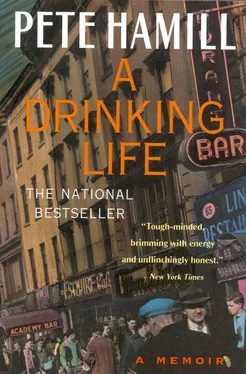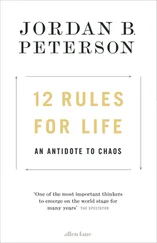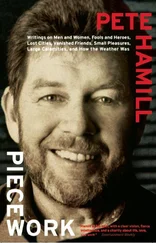But the rest of the books in the children’s section meant nothing to me. They all seemed to be about kids living in idyllic country glades, or rabbits who talked, or an elephant named Babar who had adventures in Africa. I was already traveling through Burne Hogarth’s fabulous baroque Africa in Tarzan (which ran in Sparkler comics and the Saturday Journal-American) and, of course, I had plunged through the South American jungles with Bomba. After reading The Count of Monte Cristo, I began thinking of the children’s room as another version of the Château d’If.
That didn’t last long. Soon I was a regular in the main reading room. The librarians didn’t seem to care about enforcing the rule that confined me to the children’s room. And as I moved around those dark aisles, among books sad with dust or placed in some ghetto of the forbidden on high shelves (like that copy of The Arabian Nights), I began to find the entrance to the world. At first, I was still trapped in the primary colors of melodrama. But over the last years of the 1940s, the Library took my instincts for the lurid and refined them. The comics, radio serials, B movies, dirty stories, even The Amboy Dukes, were part of my experience, the foundations of my own sense of the mythic; I took them with me to the act of reading literature. But slowly the myths started assuming different shapes, a wider context, deeper roots. And reading became a kind of creative act. With each book, I was somehow collaborating with the writer in the creation of an alternative world. I was at once in Brooklyn and in not-Brooklyn. These books were more than simple collections of abstract symbols called words, printed on paper; they described real events that happened to me. So I was Jim Hawkins, hiding from Blind Pew. I was D’Artagnan, fighting duels with the henchmen of the evil Milady. I was Edmond Dantès, escaping from my prison cell to extract my terrible revenge. I was Sydney Carton doing a far, far better thing than I had ever done and going to a far, far better place than I had ever known.
I carried those books home, consumed them like food, then brought their stories and characters and lessons down to the streets with me. I couldn’t really tell my friends about them. But they were real in my head, they often peopled my dreams, and they helped give me a sense that the streets were not everything. It didn’t matter if I never hit a spaldeen five sewers like Paulie McAleer, or if I wasn’t the best street fighter in the Neighborhood. Nobody would care if I refused to join up with the Tigers and fight fair ones with the hoods from South Brooklyn. There was a bigger world out there. And by the time I was thirteen, I was sure I was going to see it.
I TRIED VERY HARD to believe in God, but I had almost no success. From the first grade on, I studied religion at Holy Name. I memorized endless pages of the Baltimore Catechism and even won religion prizes for reciting in a singsong way the questions and answers of the text. Who made the world? God made the world. Who is God? God is the creator of heaven and earth, and of all things. What is man? Man is a creature composed of body and soul, and made to the image and likeness of God. Why did God make you? God made me to know Him, to love Him, and to serve Him in this world, and to be happy with Him forever in the next. Where is God? God is everywhere.
The problem was that I didn’t believe any of this. On the surface, I was a reasonably good Catholic boy. I took my first communion, was confirmed, finally became an altar boy, memorizing the Latin responses for the whole Mass. Ad Deum qui laetificat, juventutum meum. … I loved the glazed baroque paintings on the walls of the church. I loved the statues of the flayed Jesus and his grieving mother. I loved the music most of all, with the great booming hymns filling the church on Sunday mornings. I even loved the smell of guttering candles, palm leaves at Easter, pine needles at Christmas. I just couldn’t believe in God.
This was one of the heaviest secrets that I carried through those years. I couldn’t talk to my mother or father about my terrible failure to imagine God; I certainly couldn’t discuss it with the Xaverian Brothers at Holy Name; and down on the street I was afraid that the other kids would think I was weird. So I kept silent. To be sure, the religious education I received taught me some valuable lessons. I didn’t care much about the Holy Ghost (though I loved his cartoony name), the Blessed Trinity, or Original Sin. But I did understand the catechism’s definition of a mortal sin; it had to be a grievous matter, committed with sufficient reflection and full consent of the will. That is, a mortal sin was a felony. And the Baltimore Catechism taught us that certain mortal sins cried to heaven for vengeance: willful murder, the sin of Sodom, oppression of the poor, defrauding laborers of their wages. For a long time, I didn’t know what the sin of Sodom was and couldn’t get anyone to explain it to me (not to mention whatever it was they did in Gomorrah). But the rest of the Church’s list of abhorrent sins was certainly admirable.
One trouble was that the Church in New York didn’t follow its own list of rules, as laid out in the catechism. It certainly didn’t seem to care very passionately about the poor. It shamed us into contributing money every Sunday by publishing our names in the church bulletin along with the amounts of the donations. But while altars were heavy with gold chalices and monstrances, and priests drove cars and grew fat, I never saw them down on Seventh Avenue. A Big Shot from the political club helped my father get a job; no priest ever did the same. I never saw priests on picket lines outside the Factory, joining in the fight against the bosses who were defrauding the workers. After sex, most of their negative passion was reserved for communism, which had absolutely nothing to do with life in the tenements of Seventh Avenue. The priests would never try to help a drunken man; all they ever did was judge him.
Still, the Xaverian Brothers at Holy Name tried hard to make me a good Catholic. I was taught the chief sources of sin: Pride, Covetousness, Lust, Anger, Gluttony, Envy, and Sloth. But again, most of the focus seemed to be on Lust. In the sixth grade, Brother Eliot kept me after school one afternoon and tried to explain sex to me. I knew some of the mechanics now from Arnold, the boys at Fox Lair Camp, and the kids from Seventh Avenue. But somehow, in the vague, reverent, whispering way Brother Eliot described it, sex became even more awesome and darkly attractive. It was, Brother Eliot said, a wonderful gift from God. But that didn’t prevent the Baltimore Catechism from trying to make it a felony. “Lust,” the catechism said, “is the source of immodest looks and actions, which lead to blindness of intellect, hardness of heart, the loss of faith and piety, the ruin of health, and final impenitence.” Obviously, this was written by men with a well-developed sense of horror. But they didn’t understand that an experience so colossally ruinous could never truly be avoided by the young. Even at the risk of hardness of heart and the ruin of health. In a way, they were offering another dare.
I listened in religion class, and to the fearful whisperings of Brother Eliot, but I just didn’t understand it. There were people all over the Neighborhood who were bone poor. Night and day, there was violence on the streets. And I had seen those movies about the concentration camps. Why were the priests and brothers so crazy and fierce about sex? I was a virgin. I had no idea how it felt to fuck a woman. But I just couldn’t imagine that someone as all-powerful as God was sitting around heaven on some throne, pissed off about what I might do at night on Seventh Avenue. The good brothers made God sound like some glorified scorekeeper, endlessly filling in box scores and then punishing those who made errors. Since there were billions of people on the earth, it seemed to me that He would have almost nothing else to do. Just writing down the sins of the Tigers would keep him busy, and if he had to do all of Asia, all of Russia, all of Europe, every man and every woman committing sins of Lust, all the movie stars and all the baseball players and all the wise guys in the Mafia, when would He ever get around to noticing what Noona Taylor was doing on the roof with Millie from the Tigerettes?
Читать дальше












